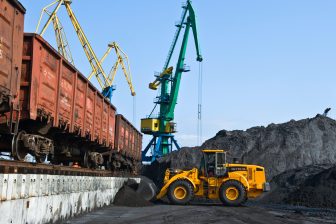
‘The Baltic route can be a good solution for Ukrainian grain exports’
Ukrainian grain exports are currently running smoothly also via rail. Congestion is at normal levels; however, in two-three weeks, the new peak export season will be here after the summer harvest. Ukraine’s options for transporting its agricultural produce are limited, yet, some solutions could prove valuable for all parties involved. For instance, the Baltic route appears to have much potential, according to the president of the Ukrainian Logistics Alliance, Edvins Berzins.
The situation: Russia withdrew from the Grain Deal, leaving Ukraine in limbo regarding agricultural exports. The rail route via Moldova and barge services via the Danube appeared as the immediate solutions to transport grain. However, alleged Russian attacks on Ukrainian logistic locations along the Danube made the situation more complex, also raising safety concerns for the people involved in this supply chain, according to Berzins.
In the meantime, Lithuania made itself available and proposed to utilise the Baltic rail freight corridor to export Ukrainian grain. The main benefit in this regard would be LTG Cargo’s expertise in gauge changes and the fact that it operates a Polish and Ukrainian cargo subsidiary that can assist in running the transport corridor. In fact, Berzins said that LTG is working very hard to make this happen and that it already runs two grain trains per day, which could increase if needed.
On top of that, Latvia also claimed that its ports and neighbouring Estonia’s are the keys to facilitating Ukrainian grain exports. The Latvians said Lithuania does not have the needed port capacity to help Ukraine. However, they underlined that they are willing to foster rail freight flows from Lithuania to Latvian and Estonian ports. In practice, this would be a collaborative task where Lithuania provides the rail route and the rest of the Baltics their terminal and port infrastructure.
Also read: Ukraine integration on EU railways: different gauge not the only obstacle
Reality check
The rail route via Moldova is cheaper for Ukraine since Moldovan Railways provide discounts. At the same time, Ukrainian Railways announced that they will be able to run their own transit services via Moldova. Consequently, from a cost-benefit perspective, it makes sense for Ukraine to dispatch as much grain as possible through Moldova.
However, the way that the situation unfolds along the Ukrainian border with Moldova and Romania is not promising. Apart from the practical obstacles occurring after the destruction of Ukrainian port facilities and silos from bombs, security concerns could lead the Danube export plan to slow down. The same could apply though to rail services in the region.
In this sense, it appears that no solution could be the holy grail of Ukrainian exports. Many solutions applied at the same time could be the way to go. “Export possibilities via Moldova and the Danube axis are still good. Moldova and Danube can be a good alternative; however, Russian attacks complicate things very much,” explained Berzins.
The Baltic case
Berzins also added that traffic between Poland-Ukraine is still possible, even though Poland and other states neighbouring Ukraine, like Hungary, are still banning the imports of Ukrainian grain. This situation complicates things because it does not provide space for a more favourable regime for Ukrainian exporters, while a better pricing model like the one applied in Moldova seems to be out of the question.
Nevertheless, the Baltic states could come to the rescue. Berzins said that transporting grain from Ukraine to Baltic ports can be a win-win solution for everyone involved. “The Baltic states have much capacity left, and this is especially true for the ports. At the same time, railway companies and ports of the three countries are trying to compensate for their losses after stopping business with Russia, so they need more volumes,” he explained.
He appeared optimistic that the Baltic route could prove to be a “realistic and very important solution for Ukraine” as long as the expectations are also realistic. “It is a good solution for part of the grain volume, not all of it, he stressed. He cited the experience that those countries have in gauge difference and the fact that there is already some involvement in grain exports as the main benefits.



